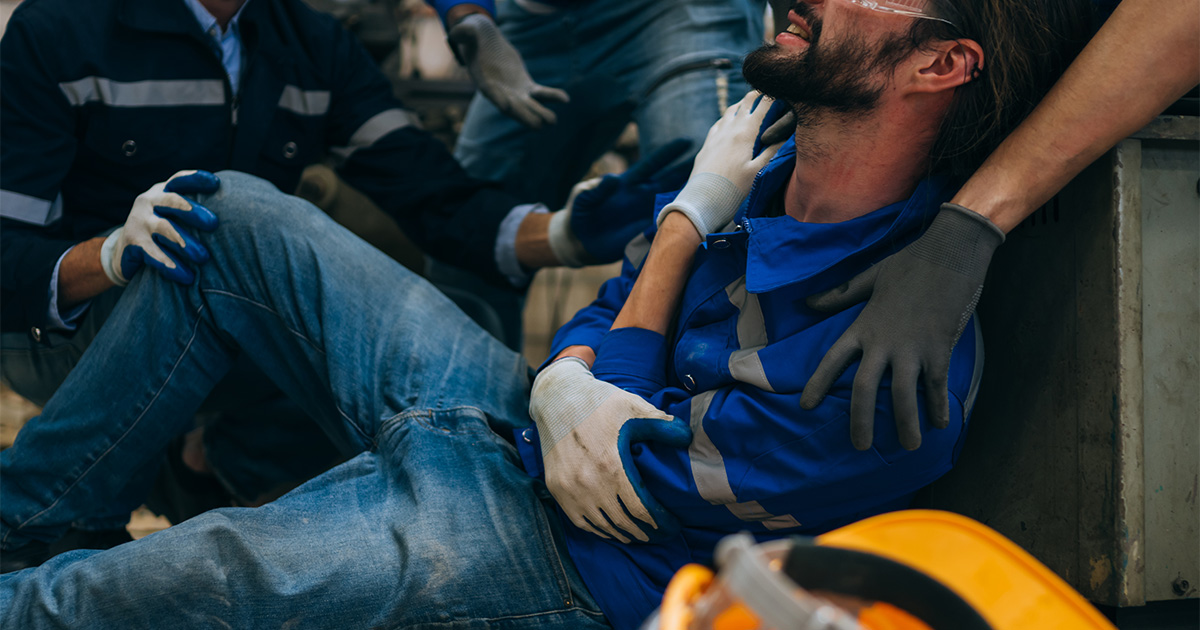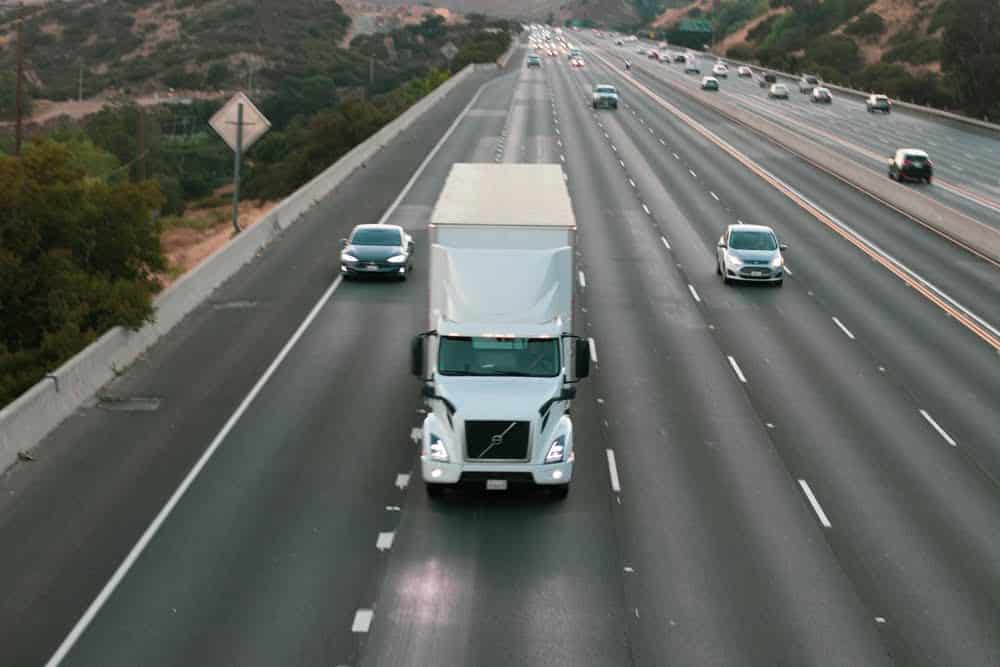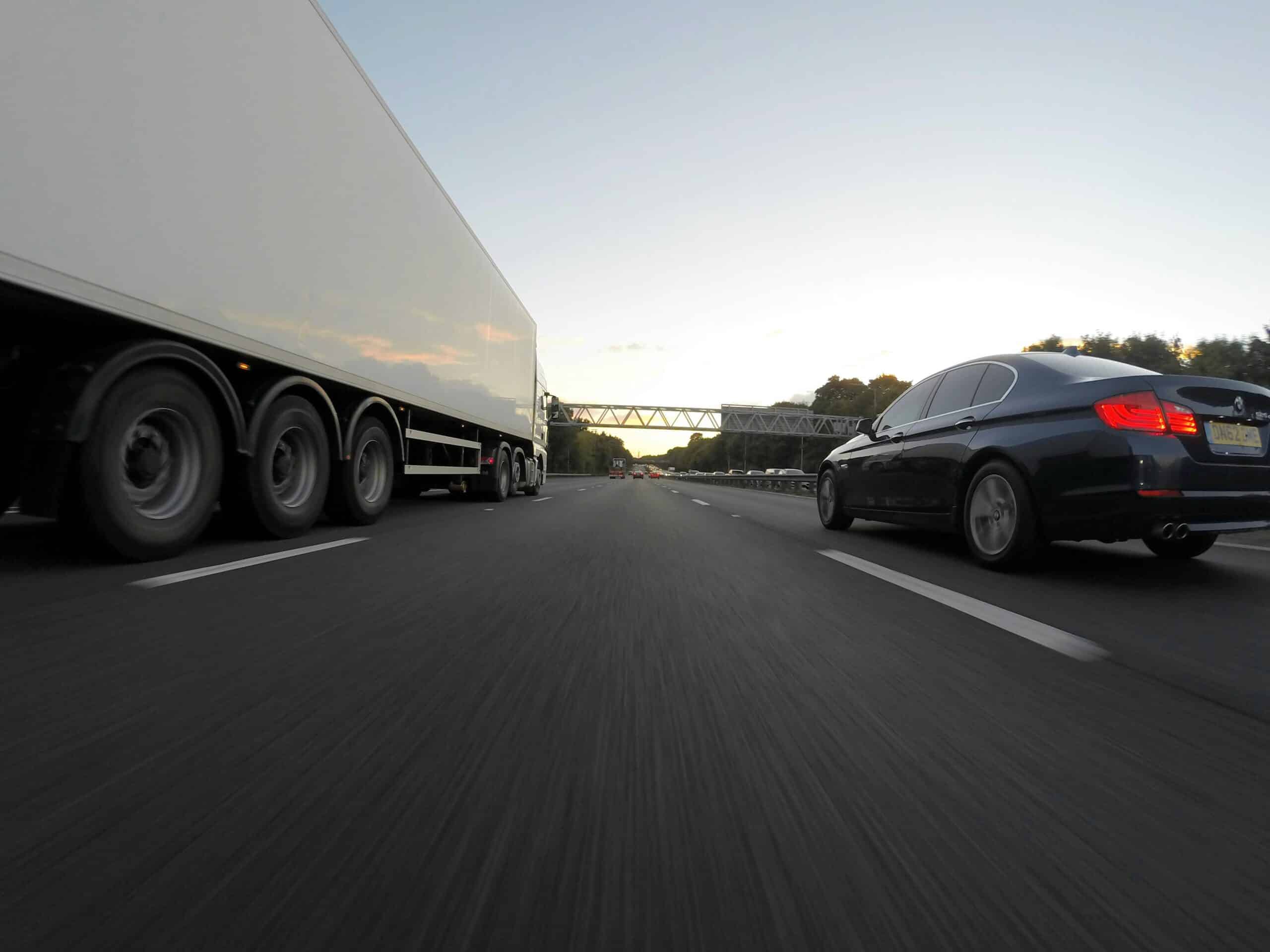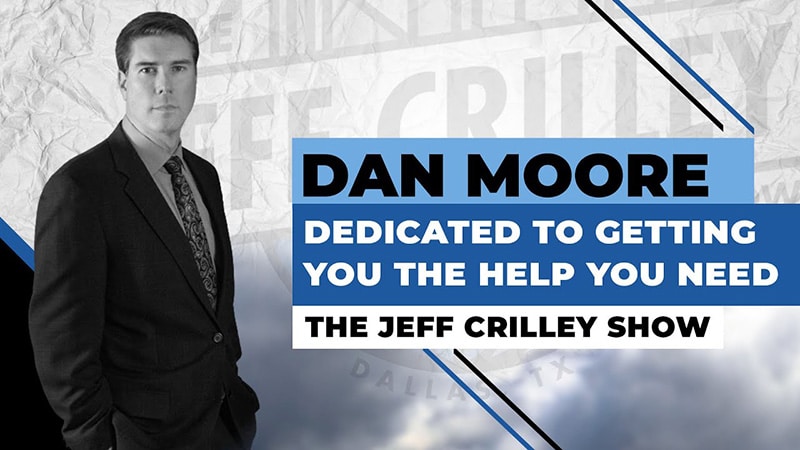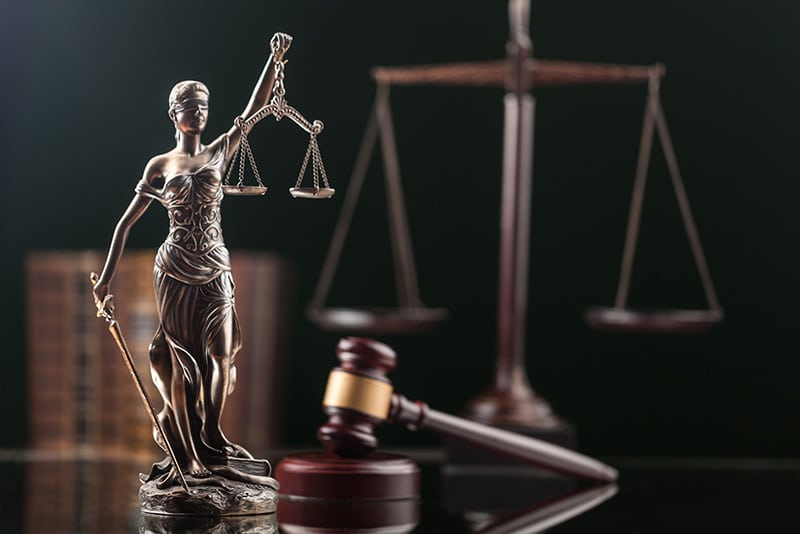A Complete Guide to Qualifying a Slip and Fall Accident Claim in Tulsa, Oklahoma.
Have You Been Involved in a Slip and Fall Accident Lately in Tulsa, Oklahoma?
You might be thinking about how to be eligible for in a Tulsa Oklahoma slip and fall accident claim. We got answers for you!
To make sure you get paid what you’re entitled to, it’s important to comprehend the steps involved in submitting a claim and the documentation needed.
The Law Office of Dan Moore, also known as The Wreck Man will take you step-by-step through the process of qualifying a slip and fall accident claim in Tulsa, OK, in this extensive guide. We will give you all the information you need to confidently navigate the legal process, from assembling evidence to assessing liability.
At The Law Office of Dan Moore, The Wreck Man recognizes the value of giving our readers accurate and trustworthy information. After a slip and fall accident, our team of professionals has carefully selected this information to assist you understand your options and rights.
We intend to give you the confidence to take the required actions to safeguard your legal rights, regardless of whether you fell on a cracked pavement or slipped on a wet floor at a grocery shop.
Continue reading to find out more about Tulsa, OK, slip and fall accident qualifying requirements.
Grasping Slip-and-Fall Incidents
Accidents involving slips and falls can occur to anybody, at any time, and anywhere. In Tulsa, OK, one must comprehend the nature of these incidents to be eligible for a slip and fall accident claim.
Accidents involving slips and falls happen when someone on someone else’s property experiences a dangerous circumstance that causes them to lose their footing or balance. Serious slip and fall injuries from these collisions may include skull trauma, spinal cord injury, and shattered bones.
It’s crucial to remember that falls and slips aren’t always caused by falling on a damp surface. Inadequate illumination, badly maintained staircases, uneven or cracked sidewalks, and even debris left in walkways can all contribute to them.
You must be able to prove that the property owner or occupier’s carelessness caused the accident to be eligible for a slip and fall accident claim. This indicates that they did not keep the area secure or alert guests to any potential dangers.
The Top Elements of a Good Slip and Fall Injury Claim in Tulsa, OK Are As Follows
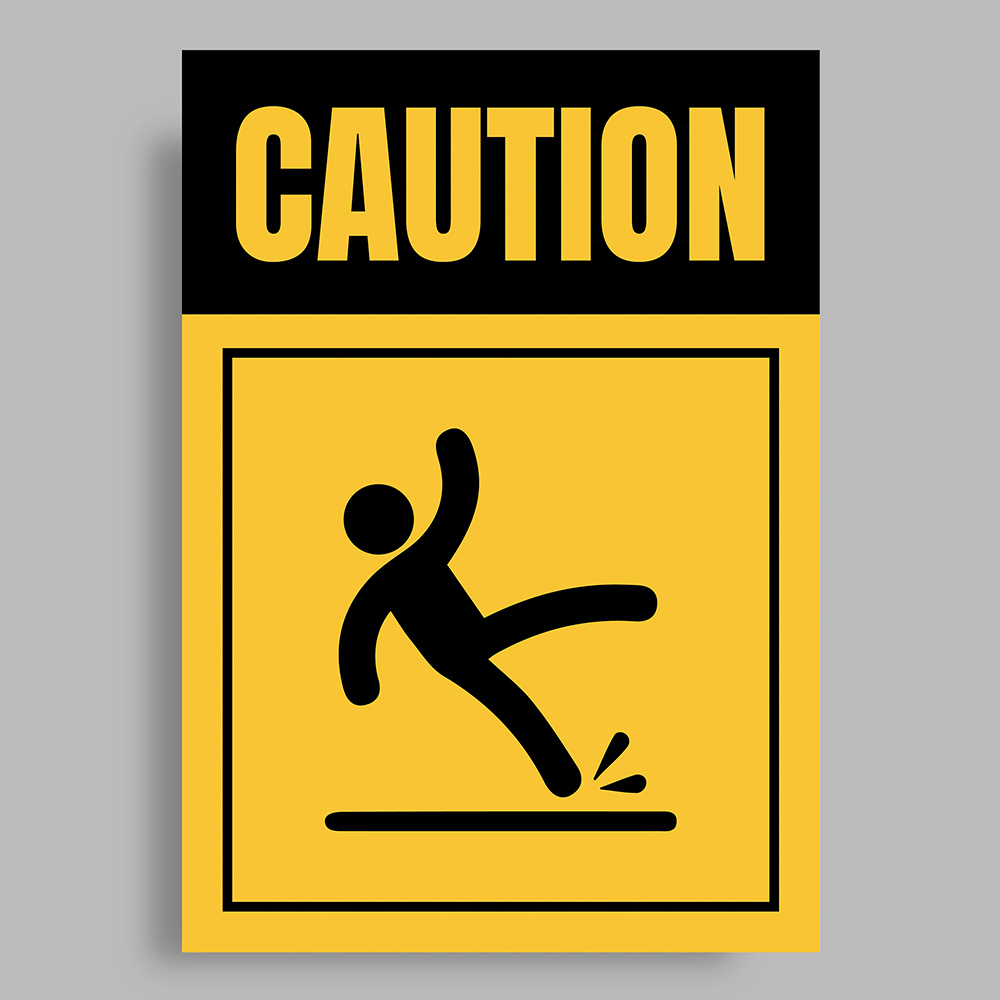
Duty of Care
Duty of care holds an individual, organization or business legally accountable for providing a standard of reasonable care for visitors where the accident occurred. In other words, if you slip and fall on either public or private property, the proprietor could be responsible for your slip and fall injuries. Duty of care does not apply to unlawful trespassing.
Breach of Duty
A proprietor who is irresponsible or negligent of a property is in breach of duty to warn visitors of potential hazards. Notice is one of the most important considerations in a slip-and-fall dispute.
Besides establishing that the location was dangerous, an experienced personal injury – slip and fall attorney Tulsa will prove that the proprietor deviated from standard practice or had prior knowledge of the hazardous condition and failed to act in a timely manner to remedy or warn of the threat.
For example, a supermarket that fails to regularly check for spilled items during normal business hours could be considered in breach of duty.
Timely Knowledge
When a proprietor has prior knowledge of a threatening situation and fails to take action to repair or alert visitors to the risk of slip and fall, then that party is likely to be held accountable for any resulting slip and fall injuries. However, if the slip and fall occurs within moments of when the threat first surfaces, then the proprietor, in most cases, will not be responsible for damages.
Causation
The injured must show that damages sustained were a direct result of the proprietor’s breach of duty. In other words, the property owner’s negligence caused the injuries and not some other contributing factor. A civil litigator would have a difficult time proving a broken step was to blame for a slip and fall if the injured party was intoxicated at the time of the accident. Any injuries will need to be consistent with the damages contested.
Damages
Any financial loss, physical pain and suffering, mental anguish and medical expense as a result of negligence are considered damages. Lost wages, long-term disabilities and, in a worst case, funeral expenses are worthy of compensation in a slip and fall accident. If you have been injured in a slip and fall accident, get medical attention immediately and document your treatment.
Typical Reasons for Slip and Fall Incidents
Numerous things can lead to slip and fall incidents. Among the most typical causes are:
- Wet or slick surfaces: Leaks, spills, or freshly washed floors might put pedestrians in risk.
- Uneven or cracked surfaces: Potholes, uneven floors, and broken sidewalks can all easily lead to tripping and falling.
- Bad illumination: Inadequate lighting can increase the chance of accidents by making it harder to identify dangers.
- Debris or obstacles: Untidy paths, lost items, or trash left in public spaces can all be quite dangerous.
- Absence of guardrails or handrails: Falls can occur on staircases and high places that are not equipped with the necessary guardrails or handrails.
Determining the precise cause of your slip and fall incident is essential to establishing liability and being eligible for compensation.
The Significance of Recording the Mishap
Recording the event following a slip and fall accident is necessary to be eligible for a claim. Getting as much evidence as you can to back up your claims and prove culpability is essential.
Take pictures of the accident scene first, being sure to capture any dangers or hazardous situations that may have led to your fall. Take pictures from various viewpoints and distances to present a complete picture.
Also, record the names of any witnesses who observed the incident happen. Their statements may be very helpful in determining who is liable, particularly if they can confirm the property owner’s carelessness.
Maintain a record of your slip and fall injuries, together with any bills you incurred and the medical care you received. Bills, receipts, and medical documents will all help prove how much damage you sustained and how much the accident cost.
Don’t forget to record the accident’s date, time, and weather at that precise moment. These specifics may be essential to establishing your case
You can support your slip and fall accident claim with the required documentation if you carefully record the incident.
Actions To Take Right Away Following a Trip and Fall
It’s critical to move quickly following a slip and fall incident to safeguard your rights and support your claim. The actions you should take are as follows:
- Seek medical attention: You should put your health first. It’s important to see a doctor even if your injuries seem minor to be sure there are no underlying problems.
- Report the incident: Give the manager or owner of the property prompt notice. Make sure you give a thorough explanation of what transpired and ask for a copy of the incident report in writing.
- Preserve evidence: As was already indicated, take pictures of the accident site, any injuries, and any other pertinent information. Any tangible proof, like as ripped clothes or broken personal items, should be preserved
- Obtain witness statements: If there were any witnesses to the collision, get in touch with them and ask for a written account of what they observed.
- Don’t talk to anyone about the accident: Only you and your lawyer should talk about the accident and your slip and fall injuries. During the claims procedure, whatever you say could be used against you.
You will establish a solid basis for a successful slip and fall accident claim by acting now.
Assembling Proof To Support Your Assertion of Injury and Resulting Claim
To prove your case and be eligible for a slip and fall accident claim, you must get strong supporting documentation. The following are some essential pieces of proof you ought to gather:
- Take pictures of the accident scene: Take pictures of the dangerous situation—such as a damp floor, a damaged sidewalk, or a shoddy staircase—that led to your fall.
- Medical bills and records: Maintain a file of all the medical care you receive, including prescription drugs, hospital stays, doctor visits, and therapy sessions. These records will be useful in determining the severity of your wounds and the related costs.
- Witness statements: Get written accounts from those who observed the mishap. Their testimonials might strengthen your argument and offer further proof
- Incident reports: Get a copy of the incident report if you spoke with the manager or owner of the property about the accident. This record may be used as formal evidence of the mishap.
- Surveillance footage: Ask to see the film if the slip and fall incident happened in a public area or at a place of business that has security cameras. When proving culpability, video evidence can be quite convincing.
Recall that your case for a slip and fall accident will be stronger the more proof you can compile.
Four Types of Evidence You Need for a Slip and Fall Accident Claim
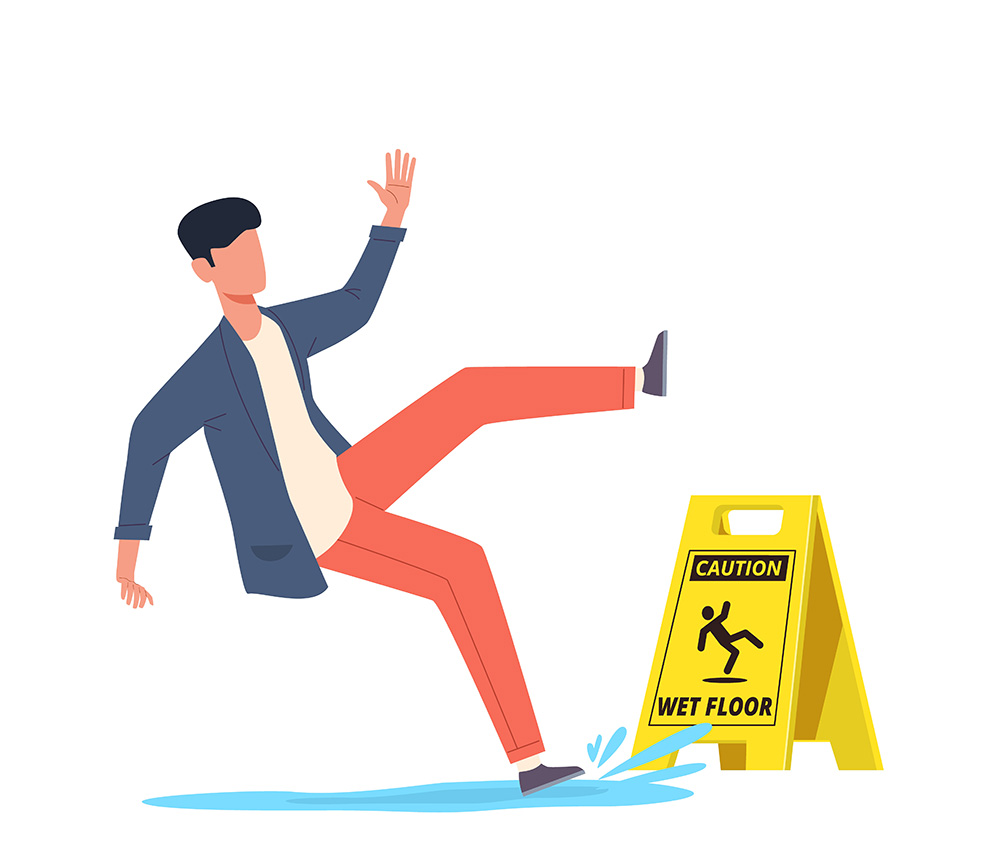
There are four types of evidence we need to make a slip and fall accident claim:
1. You must have been hurt.
First of all, you need to be hurt in the accident and you need to not have waited more than three days to see the doctor. This is true for most injury claims, but it’s even more true for a slip and fall accident claim because they are so much harder to make. We don’t want to have to battle an insurance adjuster that’s just going to tell you that you must not have been that hurt if you took a week to see a doctor. We know that you’re hurt.
2. What was on the floor, or what was the worn out condition that needed to be repaired.
We have to know what was on the floor or what was the worn out condition that wasn’t repaired and should have been repaired. For a slip and fall claim, that might be water on the floor, an oily substance, or something that made the floor slippery that shouldn’t be there, or for a trip and fall or premises liability type of claim, it may be some sort of worn out condition, like tile or carpet that’s worn out. It could have a frayed edge that sticks up and can catch your foot. It may be concrete, loose concrete, a hole in the concrete catches your foot.
We’ve also had cases where it was like a wooden porch that collapsed once it was stepped on. Having a photo does help, although we know that’s not likely in a lot of cases. But if you can at least describe the condition that caused your injury, or you have a photo, we can usually help.
3. A report must have been filed.
The third type of evidence we need for a slip and fall claim is, you must have filed a report with the store. Obviously, we’d like to have a copy of that report, but we know that it’s not likely that they’d give you a copy. If it hasn’t been too long since the incident, go back to that store owner today and let them know you were hurt.
4. How long was the dangerous condition present.
The last type of evidence we need to make a successful slip and fall or trip and fall claim is we must have some knowledge of how long the dangerous condition or faulty condition had been there. This is one of the hardest things to substantiate, but there are facts and evidence that help us. It can be inferred by what an employee comments you, such as they may have commented, “You’re the second person that’s tripped on that this week,” or perhaps, “I was just about to clean up that water spill.”
These types of comments prove prior knowledge that the property owner or their employees knew about that dangerous condition before you fell. There’s also other things that we can see, perhaps a drip from an air conditioner or a leak from a freezer. There’s usually some sort of yellowing or water stains. Maybe it’s water in the stucco or the wall. Those type of things and maintenance reports can help us figure out some of these things.
Liability Determination in Slip and Fall Incidents
An essential first step in becoming eligible for a slip and fall accident claim is figuring out who is at fault. responsibility in Tulsa, OK, is mostly predicated on the idea of premises responsibility, which makes property owners accountable for keeping guests safe.
You have to be able to demonstrate negligence on the part of the occupier or property owner in order to establish culpability. To do this, you must exhibit the following:
- The owner of the facility owed it to guests to provide a safe atmosphere.
- By neglecting to address or warn about the hazardous condition, the property owner violated that duty of care.
- Your slip and fall incident and the slip and fall injuries it caused were directly brought on by the duty violation.
Since establishing negligence necessitates a detailed examination of the accident’s circumstances, it might be difficult to prove. For this reason, speaking with a slip-and-fall injury lawyer who focuses on premises liability matters is essential.
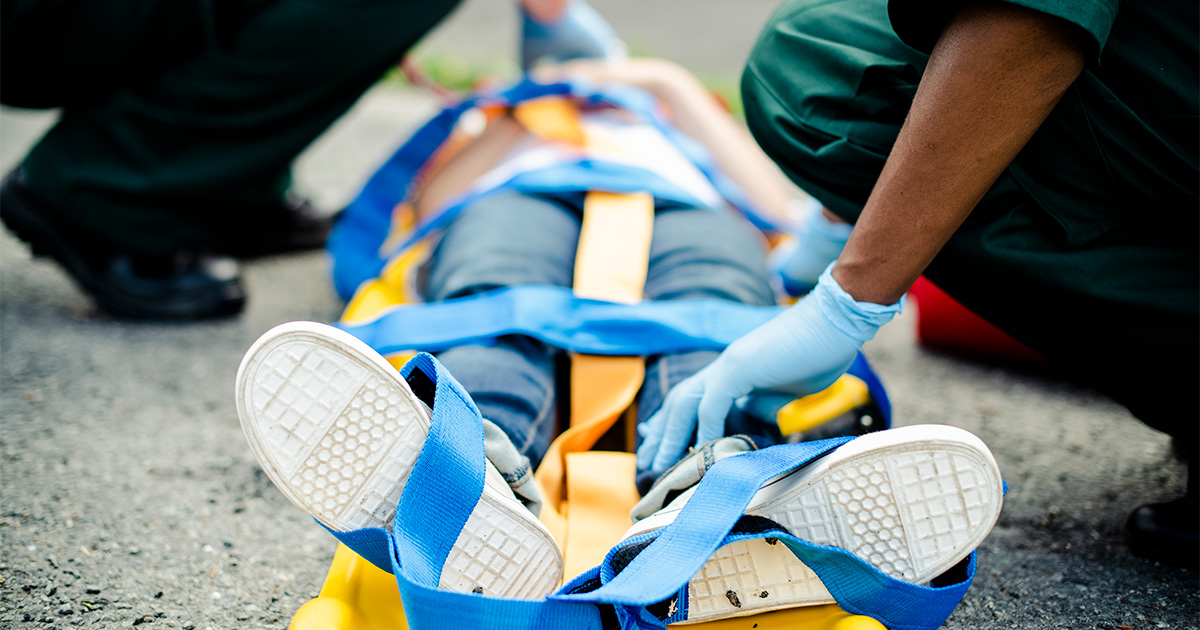
Proving Fault in Slip-And-Fall Accidents
It’s sometimes difficult to prove who is at fault for slip-and-fall accidents. Thousands of people each year are injured from slipping and falling. Premises liability can arise from falls on wet floors, potholes, or stairs. A slip and fall accident claim can also result from surfaces that have become slick or dangerous.
It can be challenging to prove beyond a reasonable doubt that the owner of the property is responsible for a slip-and-fall accident. A slip-and-fall case could be caused by a hazardous condition outside anyone’s control. A slip and fall accident claim at a grocery store might paint the business owner as a liable party. They may be responsible for dangerous premises, but unsafe conditions aren’t the only factor considered in a slip and fall lawsuit.
Could the Property Owner Have Prevented the Accident?
If you or a loved one has been injured in a slip-and-fall accident, it may be tempting to pursue justice in the form of a slip and fall lawsuit as soon as possible. But first, ask yourself: “Could the accident have been avoided if the property owner had been more careful?”
In tort law, or the law concerning civil wrongs, personal injury claims come down to negligence. That means a plaintiff will have to prove someone’s carelessness caused their injuries. To show negligence in a personal injury case, a premises liability claim will allege that:
- A business or homeowner has a duty of care to an occupier of the premises.
- They have breached the duty by failing to take reasonable care against harm to the occupier.
- Their breach is the cause of the occupier’s injuries.
- The occupier of the premises suffered damages, such as broken bones and medical treatment costs.
In practice, personal injury has much more nuance. It’s not enough that a claimant has suffered serious injuries. The property owner might not have a duty of care to begin with. If they do have a duty, they may have already satisfied it absent those injuries that occurred. For example, suppose a leaking roof leads to a slippery condition that causes an injury. The property owner may not be responsible for the injuries if they took reasonable care to notify the condition under the circumstances. If the property owner installed a drainage grate in the floor to limit slippery conditions and posted signs or floor marker signs, they may have done all the law requires them to do.
In addition, property owners won’t always be responsible for things that a reasonable person would have avoided. That includes things that one would expect to be present in a particular place. For example, a claimant may trip over a water hose on a lawn. It wouldn’t be surprising to an ordinary person that gardening tools would exist there. Every person has a responsibility to be aware of their surroundings and make efforts to avoid dangerous conditions. In this instance should a lawn transient have looked out for the hose because he or she saw the lawn was being watered?
A Property Owner’s Duty to Maintain Reasonably Safe Conditions
Depending on who is entering their property, owners may have a duty to reasonably ensure their guests’ safety. This depends if the guest is a(n):
- Invitee
- Licensee
- Trespassing Adult
- Trespassing Child
A property owner must ensure that swimming pools, trampolines, and other so-called “attractive nuisances” are secure. For instance, swimming pools must be securely covered and/or protected by a fence to prevent children from using them when unattended.
In general, an owner must act reasonably under the circumstances to prevent foreseeable harm to likely victims. This means property owners must take reasonable steps to ensure that their property is free from dangerous conditions that would cause a person to slip and fall.
This reasonableness is often balanced against the care that the person who slipped and fell should have used. What follows are some guidelines that courts and insurance companies use when determining fault in slip-and-fall accidents.
Liability for Slip-And-Fall Accidents
If you’ve been injured in a slip-and-fall accident on someone else’s property because of a dangerous condition, you may have a case. You’ll likely need to be able to show either the property owner or an employee of that property owner:
- Should have known of the dangerous condition (This would be because another “reasonable” person in their position would have known about the dangerous condition and would have fixed it)
- Actually did know about the dangerous condition, but did not repair it
- Caused the dangerous condition
Many property owners are pretty good about the upkeep of their premises. For that reason, it’s the first situation above that is most often litigated in slip-and-fall accidents. However, it is also the trickiest to prove because of the words “should have known.”
After presenting your evidence and arguments, it’ll be up to the judge or jury. They’ll have to decide whether the property owner should have known about the slippery steps or carpeting that caused you to fall. They will make this determination based on whether it was reasonably foreseeable that you would have been injured under the circumstances.
If you have a valid slip and fall accident claim of negligence, you’ll want to work out the types of damages to allege. These include:
- Medical bills
- Lost wages
- Pain and suffering
Reasonableness
To show that a property owner is liable for the injuries you sustained in your slip-and-fall accident, you’ll have to show the reasonableness of the property owner’s actions. The following are some questions that you or your attorney will want to discuss before starting a case:
- How long had the defect been present before your accident? Let’s say a roof over the stairwell had been leaking for the past three months. Given the long duration, it may be less reasonable for the owner to allow the leak to continue. Contrast this with a leak that had just started the night before, where the landlord was only waiting for the rain to stop in order to fix it.
- What kinds of daily cleaning activities does the property owner engage in? If the property owner claims that they are inspecting the property daily, what kind of proof can they show to support this claim?
- If your slip-and-fall accident involved tripping over something that was left on the floor or in another place where you tripped on it, was there a legitimate reason for that object to be there?
- If your slip-and-fall accident involved tripping over something that was left on the floor that once had a legitimate reason for being there, did the legitimate reason still exist at the time of your accident?
Carelessness, Clumsiness, and Comparative Negligence
A property owner has different ways to put up a defense to negligence claims. Most states follow the rule of comparative negligence when it comes to a plaintiff’s contributory negligence. This means that if you somehow contributed to your own accident, your slip and fall accident claim is weakened. Your award for your injuries and other damages may be lessened by the amount for which you were comparatively at fault. This percentage is determined by a judge or jury. An example of a situation where a comparative fault might be in play could be an accident where you were talking on your cell phone and not paying attention to a warning sign.
There are some questions that you can ask yourself to estimate how likely it is you’ll be found to be comparatively negligent:
- Did you have a legitimate reason for being on the property owner’s premises when the accident happened? Should the owner have anticipated you?
- Would a person of reasonable caution in the same situation have noticed and avoided the dangerous condition? Would they have handled the condition in a way that would have lessened the chances of slipping and falling? An example of this could be if you were holding onto a handrail while going down icy stairs.
- Did the property owner erect a barrier or give a warning of the dangerous condition that led to your slip-and-fall accident?
- Were you engaging in any inherently dangerous activities that contributed to your slip-and-fall accident? Examples of this could be running around the edges of pools, texting while walking, jumping or skipping, and attempting to ice skate while in business shoes.
If you’ve been talking with an insurance company about a possible settlement for your injuries, you may encounter challenges. You’ll probably be asked many questions that are similar to these. Although you won’t have to prove to the insurance company that you were extremely careful, you’ll probably have to show you weren’t comparatively negligent.
Do You Have Slip-And-Fall Liability Questions?
An Experienced Slip and Fall Injury Attorney in Tulas, OK Can Help
If you’ve been hurt in a slip-and-fall accident, you may want to contact a slip and fall attorney as soon as possible for a free slip and fall lawsuit review. Personal injury law can be complicated, and dealing with insurance companies can be a pain. An experienced personal injury lawyer can give you legal advice, sometimes through a free case evaluation.
Because of statutes of limitations, which limit the time a person has to bring a slip and fall lawsuit, you should act quickly. If you think you have a claim, you may want to get in touch with The Wreck Man, an experienced slip and fall lawyer, as soon as possible. Having a fall accident lawyer on your side can greatly increase your chances of recovery.
Common Slip and Fall Injuries in Slip and Fall Accident Claim
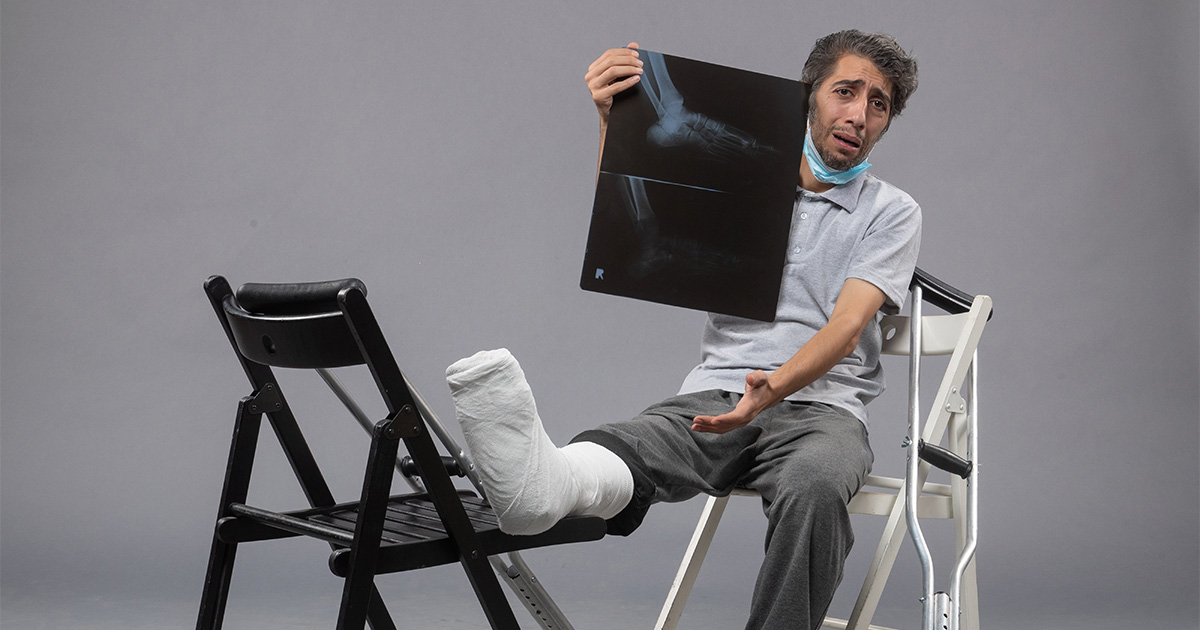
According to the Centers for Disease Control and Prevention (CDC), injuries to the hips and head are the most common injuries attributed to slip and fall accidents. In fact, there are more than 300,000 hip fractures from slip and fall accidents every year.
These injuries often prove serious and require immediate hospitalization. They may also lead to months or years of physical therapy, as they can leave a victim temporarily or permanently disabled. If someone else was responsible for your injuries, you have the right to seek compensation to pay for your losses.
Additional Injuries After a Slip and Fall
There may be many more injuries that victims have to deal with after a slip and fall accident, including:
- Sprained muscles
- Broken bones (clavicles, wrists, legs, feet, and more)
- Cuts and scrapes
- Back injuries
- Spinal cord injuries, often resulting in some form of paralysis
- Concussions
- Traumatic brain injuries (TBIs)
- And more
A lawyer with our firm can help you determine if your injuries arose from your slip and fall accident.
Available Damages for Slip and Fall Victims
Depending on the content of your slip and fall accident claim, you may be eligible to collect economic and non-economic damages. The law allows you to seek damages that address the unique losses you suffered during the accident, after the accident, and in the future.
You may recover numerous specific damages, including:
- Medical expenses
- Lost income
- Inability to earn your previous salary due to injury
- Property damage
- Mental anguish
- Loss of consortium
- Pain and suffering
- Disfigurements
- Ongoing aid for long-term disabilities
- And more
The Tulsa, OK, Statute of Limitations for Claims Resulting From Slip and Fall Accidents
In Tulsa, OK, it’s critical to be aware of the statute of limitations before filing a slip and fall accident claim. The amount of time you have to file your claim is known as the statute of limitations.
For slip and fall accident claims in Tulsa, OK, the statute of limitations is normally two years from the date of the accident. If you don’t submit your claim within this window, your case can be rejected.
It is crucial that you speak with a slip and fall accident lawyer very away in order to make sure you fulfill all legal requirements and protect your right to reimbursement.
Determining Damages for Slip and Fall Lawsuits
To be eligible for a slip and fall accident claim, one must comprehend the methodology used to determine damages. The monetary recompense granted to the harmed party for their losses is referred to as damages.
Damages in slip-and-fall accident claims might consist of:
- Medical costs: These comprise the price of hospital stays, operations, prescription drugs, and rehabilitation.
- Lost wages: You might be eligible for reimbursement for the money you missed from work as a result of the accident
- Pain and suffering: This makes up for the mental and bodily anguish brought on by the injuries and accident.
- Property damage: You might be entitled to reimbursement for replacing or repairing your personal belongings if they were harmed in the collision.
- Loss of earning capacity: You might be eligible for compensation for the future income you will miss out on if your injuries make it impossible for you to work.
Determining the precise damages can be difficult since it involves taking into account a number of variables, including the extent of the injuries, how they will affect your everyday life, and any potential long-term effects.
Speaking with a slip and fall accident lawyer will assist in guaranteeing that, given the particulars of your case, you are paid what you are entitled to.

Choosing a Tulsa, OK, Slip and Fall Accident Lawyer: The Wreck Man
It can be very difficult to navigate the legal system when filing a slip and fall injury claim. It is strongly advised that you hire an Oklahoma slip and fall attorney Tulsa to safeguard your rights and increase the likelihood that your case will succeed.
Every stage of the claim’s procedure will be guided by an experienced slip and fall lawyer, from obtaining documentation to settling disputes with insurance providers, and representing you in court if a slip and fall lawsuit is necessary. The Wreck Man “wrecks” the insurance companies to ensure your maximum compensation.
Free Slip and Fall Case Review
Strongly consider a slip and fall lawyer‘s experience, reputation, and knowledge of premises liability issues while making your decision. Do you want to “wreck’ the insurance company? Go for a Free Slip and Fall Case Review with The Wreck Man today because he and our staff of attorneys are committed to defending your rights, understanding your claim, and being responsive to your questions and needs.
In Conclusion, Pursuing Your Claim for a Slip and Fall
It can be physically, mentally, and financially taxing to be involved in a slip and fall accident. However, you can take action to defend your rights and pursue the compensation you are entitled to by being aware of the steps involved in qualifying a slip and fall injury claim in Tulsa, OK.
Recall to take pictures of the incident, collect proof, and speak with an Oklahoma slip and fall lawsuit lawyer very away. You may confidently navigate the legal system and improve your chances of a favorable result by adhering to these guidelines.
We at The Wreck Man are here to help you throughout the journey. In order to assist you in making judgments regarding your slip and fall injury claim, our team of professionals is committed to providing accurate and trustworthy information.
Contact the Wreck Man Now to protect your rights and ensure you receive maximum compensation for your injuries as a result of the property owner’s negligence. Call 888-2-WRECKMAN or submit your case to get your interim needs met, your proper medical treatment, your claim filed and the case settled promptly or a trial completed, if necessary.
